Holes in Lawn: Causes + How to Fill the Small Overnight Holes
Holes in your lawn could be a sign you have a pest that needs to be controlled, especially when you’re sure it is not your dog digging them up. Small holes that appear overnight in your lawn can make your yard look ugly and damaged.
Holes in the lawn can be caused by rodents such as moles, gophers, voles, and rats or pest insects like ground wasps and birds that feed on these insects. Before filling up holes in your yard, identify the cause to get the best control and then close them up with a blend of topsoil and compost or sand.
This will, however, depend on what’s digging up the holes. The burrows can be of different sizes, usually small for insects and big holes for big rodents. Identifying the specific cause first and applying the appropriate fix, as recommended below, is important to address the problem.
Table of Contents
What causes holes in the lawn?
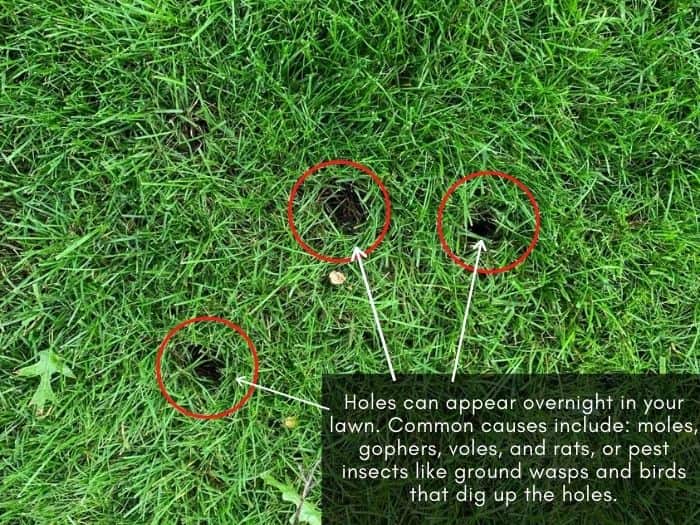
Most small round holes in lawns are caused by insects and small rodents such as moles, squirrels, gophers, voles, rats, and birds that feed on these insects. Large holes appear as children at play may make holes in your yard.
Characteristically, the holes will differ depending on the animal digging them up.
Here are the causes of holes in lawns and how to deal with them:
Earthworm holes
Earthworms are tube-shaped, legless, segmented worms found in any healthy yard’s soil. They are a healthy part of the soil because they dig small holes that aerate the lawn as they turn over the soil to feed.

If there’s a notable population of earthworms in your yard, you can wake up to many small holes in your lawn with tiny piles of granular soil pellets.
These small holes will be evident at the top of the pile of soil.
Earthworm holes are common in the spring and fall seasons when the soil is moist and the temperature warm for increased earthworm activity.
Getting rid of earthworm holes in lawn
You should not try to kill earthworms in your lawn because they are biologically beneficial to your turf. If their muddy castings are an esthetic problem, leave them to dry and then brush them into the grass. You may also need to collect mowing clippings to reduce earthworm activity on your turf.
Voles
Voles can also make holes in your yard; the best way to know the cause is to look out for the characteristics. You can detect their presence if there’s round rodent waste (droppings) with chewed grass clippings near the holes, then the culprit is voles. You might also notice some trails of dead grass.
Pro tip: Sometimes, field mice take up the holes in the lawn dug by voles. The best way to identify them is by examining the droppings. The waste of a field mouse is somewhat oval in shape.
Gophers
Gophers can make mounds of dirt and dig up holes in a lawn overnight. Being vegetarian, you’ll also see signs of vegetation damage.
They eat the roots and blades of your grass, and you’re likely to find some grass blades inside their tunnels. Apart from the holes gophers dig, the tunnels this rodent burrows underneath your lawn can affect the structural integrity of your turf, causing uneven ground levels.
To stop gophers from digging holes in your lawn, repel them by placing castor oil pellets in their holes. Alternatively, place fabric softener sheets or peppermint oil inside their burrows to force them to leave the yard. If need be, kill the gophers using The Giant Destroyer.
Moles
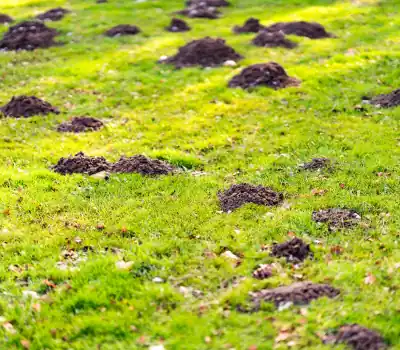
Moles hardly leave openings to their holes above the ground. They feed on grubs and other soil organisms, such as earthworms, and as such, they dig tunnels about 10 inches deep beneath the surface of your yard.
Mole holes usually have a raised volcano-shaped mound of soil (up to 24 inches high) covering their openings, and the digging animal rarely appears on the lawn unless looking for a mate.
So, if you wake up to a lawn with holes and mounds that appeared overnight, then it is likely there are moles digging beneath your turf.
How to Stop Moles from Digging Holes in the Lawn
To stop moles from digging holes in your lawn, repel them using a natural repellent such as the Natural Elements Mole and Vole Repellent that’s pet safe. If the mole problem persists, plant natural mole repellents such as marigolds, shallots, daffodils, garlic, alliums, or fritillarias around the yard to deter moles.
Rats
Rats burrow holes in areas near tree snags, fences, and big roots. Typically, there will be signs of gnawing and soil thrown out of the holes just outside the area.
Rat holes in your yard are characteristically about 3 inches wide and will show signs of small rodent activity at or near the opening.
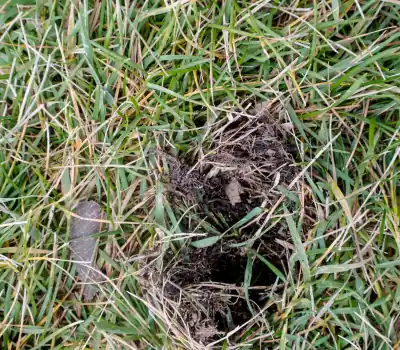
Too many rat holes around your lawn and yard could signify rat infestation. To get rid of rats and stop the holes, clear bushes and mow overgrown grass in your yard, remove their open food sources, and apply a natural rat repellent such as the Shake-Away 5006358 Rodent Repellent Granules.
Chipmunks and Squirrels
The sudden appearance of small holes all over the lawn is a sign of squirrels near the yard. These small rodents dig up and bury nuts in the yard to hide them for later use.
Eastern gray squirrels are the major cause of those holes in your lawn. The holes are typically shallow and small (2 inches wide), but there’s no mound of soil around them.
If you have nutsedge weed in your lawn, squirrels may dig up small holes to get the tubers and feed on them.
On the other hand, Chipmunks dig small burrows and tunnels in the yard where they hide in case of impending danger. Chipmunk holes can be found in areas on your lawn where there are log piles, stumps, and buildings.
Insects
Some insects live in the ground during winter and emerge in the spring. This happens when they’re in their larval stage, and when they emerge, they can leave small holes in your yard. An example is cicadas and Japanese beetles.
Some wasps, such as the cicada killer wasps and the scoliid wasp, are known to dig small holes in yards, especially where the grass is short and the ground exposed. Scoliid wasps dig small holes in the lawn in order to lay their eggs, while cicada killer wasps dig holes and bury paralyzed cicadas together with their eggs to nourish their young ones once they hatch.
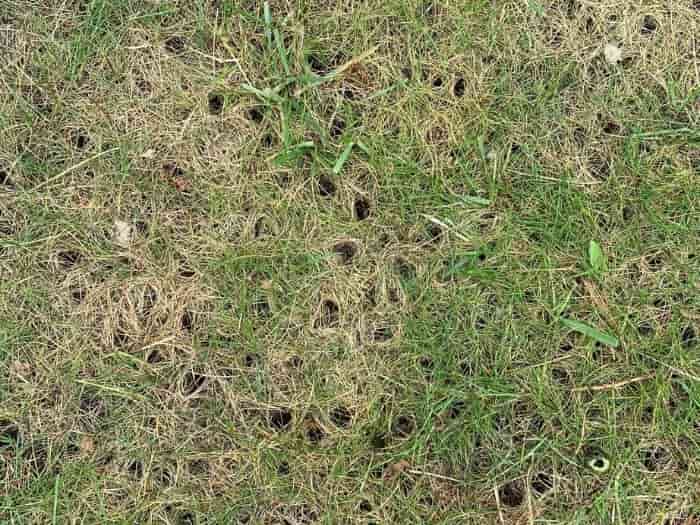
Other insects that can also dig small holes in the lawn are ants and termites. You’ll only need to treat and control these pests if the damage to your turf is extensive. Otherwise, a little bit of insect activity in the yard is normal.
Armadillos
If small holes appear in your lawn overnight, another possible cause could be armadillos. This could be true if you have these animals in your area. Since armadillos feed on small invertebrates like grubs and insects like ants and termites, they will dig up shallow holes (1-3 inches deep and up to 6 inches wide) to locate their food in your lawn.
One way to identify if this is the primary cause of small round holes in your lawn, begin by checking if you have ants or grubs in your lawn.
- Ants in the lawn will create small holes with mounds (ant hills) evident in the yard.
- Grubs eat the roots of your grass, causing irregular brown patches of dead grass.
These signs, coupled with holes in the lawn, could indicate that armadillos are present and causing damage by digging up the turf to feed on the insects.
Birds
When there’s increased bird activity in your lawn, chances are there are lawn pests present that the birds are feeding on. Grubs and ants attract birds, and so you’ll notice birds digging small holes with their beaks and claws to reveal and feed on the grubs, ants, termites, etc.
Most birds will start digging and feeding very early in the morning so you might notice the small holes in the lawn appearing overnight.
How to stop birds from digging holes
The best fix for lawn holes dug by birds is to control the grubs and other insect pests in your lawn. Apply a good grub killer and get rid of ants in your lawn to prevent birds from digging up your turf.
Snake holes
In some cases, the holes in your yard could belong to snakes. Snake holes are circular in shape and may have shed snake skin around or near them.
Keep in mind that snake holes in your lawn are likely to be the holes left by other vertebrate yard pests such as gophers, moles, rats, etc.
How to fill holes in the lawn
The approach you use to fix the holes in your yard depends on the size of the holes and how many there are.
To fill one or two small holes dug by a dog or kids, get some dirt or topsoil and put it into the hole with your hand. Press the soil down by stepping on it with your foot to make it firm. Rake the remaining scattered soil into the crevices around the lawn.
In some cases, the holes and ruts can be big to cause serious damage to your lawn. You’ll therefore need to use a different approach to fill them up and level out the lawn.
Here’s how to fill big holes and ruts in your lawn:
- Pry the sunken grass up using a flat shovel.
- Cut the sunken areas into square 1-foot square sods using the shovel.
- Fill up the holes with new topsoil.
- Replace the grass sods and press them down with your foot or roller.
If the damage is too much, you may need to re-establish your lawn afresh. This means you’ll start with pest control and then tear down the remaining lawn, till the yard and plant new grass or lay new sod.
FAQ
How do you know what’s making holes in your yard?
To identify what’s digging holes in your yard, observe the characteristic droppings left behind. Small, pea-sized pellets may indicate the presence of rats, mice, chipmunks, or bats. Rounded, pea-sized pellets are likely from rabbits, while slightly larger, smoother, oval pellets may be from a white-tailed deer. Smaller, oval pellets are often a sign of squirrels.
What animal digs holes in my yard?
Some common animals known for digging holes in yards include squirrels, skunks, raccoons, opossums, moles, and groundhogs.
Iowa State University Extension and Outreach –Diagnosing Holes in the Yard.

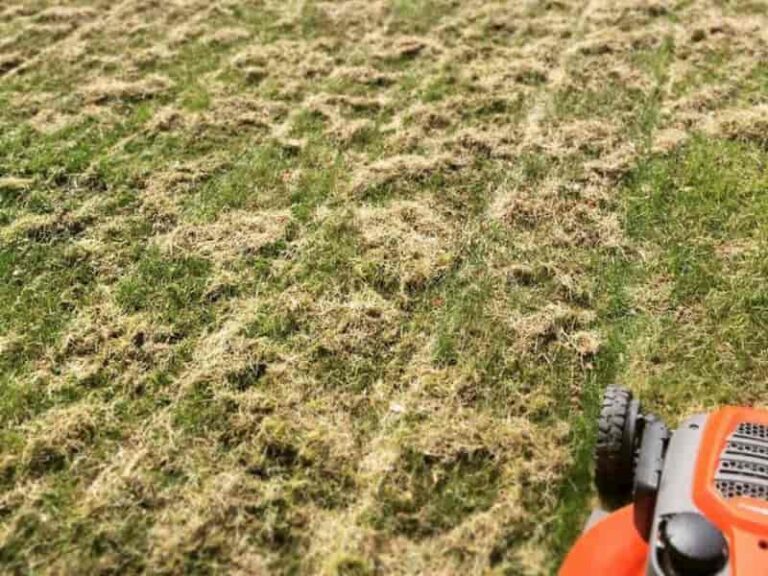
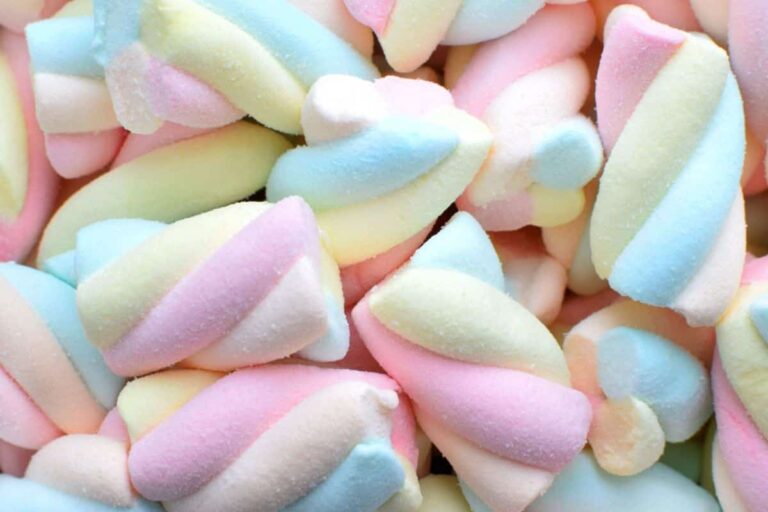
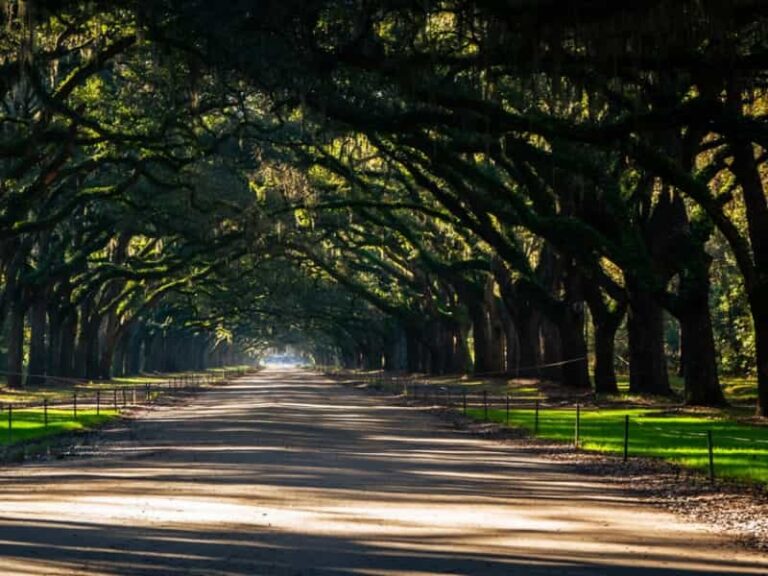
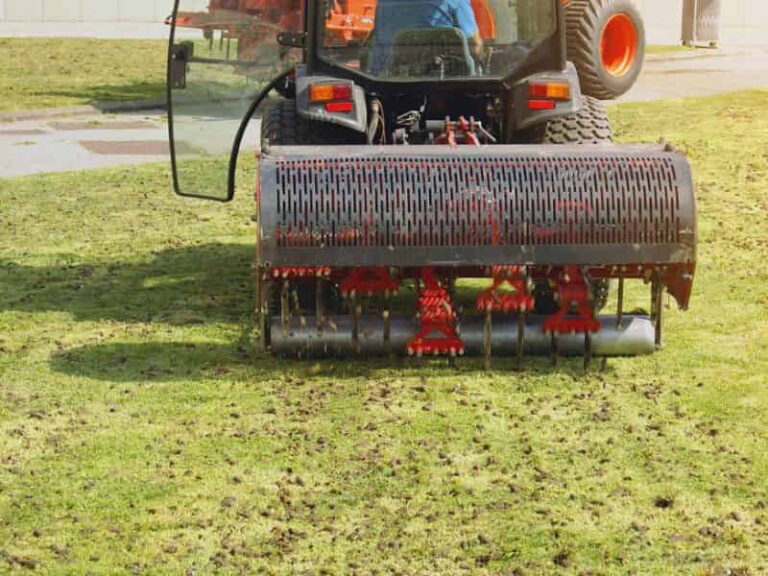

I had something very similar, was told it was skunks digging for grubs. Treated with Atrazine and haven’t had a problem since. Moles are after the same thing, so it’s a 2 for 1 if you have those too.
I have very similar holes from squirrels looking for/burying acorns. They tend to do it more when the soil is softer. Feel the bottom of several holes. If you find acorns or acorn pieces – it’s definitely squirrels.
I have three different issues going on this year that I’ve never noticed before. First I have small, perfectly shaped circles the size of a dime or pencil scattered throughout my .35 acre property. Second, there are quarter or bigger sized holes in the yard. And, these too are perfectly round. Neither one shows any sort of debris outside, surrounding the holes. And finally, there are what I assume to be holes, but not sure how big with all sorts of debris they have on top. Hard to describe, but image if something is going into the ground instead, and pulling with it sticks, leaves, grass whatever down into the hole with it, as if to plug it up. So now I have at least hundreds of “bumps” in my lawn. You can’t walk without stepping on one of these, which are a good inch high. Clearly I need help, but I don’t even know what’s going on to be able to ask for it! I wish I could post pics.
For whatever it’s worth. I have the same thing. Just appeared past two days. Even through the concrete step outside my back door. The yard I can understand. But the concrete. It’s like small bullet holes. Perfectly round dime size?
We have 1 hole about 2” round, no dirt around it. We plugged with concrete and next morning, concrete was beside the hole. What could this be?